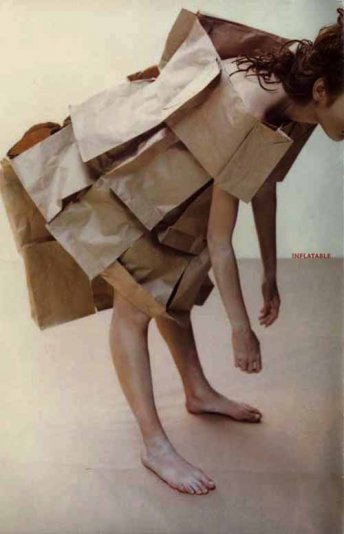

"Despite repeated warnings that we are fast approaching a point of no return, the world's governments (and ourselves) pay these issues little more then lip service"
ARK-INC offers products and services as investments in the creation of a 'post-crash' portfolio that will hold or gain value as the world of traditional economics crumbles. To supplement these investments, ARK-INC helps promote and facilitate (though its ark trust initiative) an ad-hoc self-sustaining social network known as the Ark Collective.)
 One last swansong with dye discharge and devore before exploring the unchartered seas of green fabrics and processes.Cushion labelled thus :
One last swansong with dye discharge and devore before exploring the unchartered seas of green fabrics and processes.Cushion labelled thus :"Steadily over the next four days the silkworm produces a fine thread by making a figure of eight movement some 300,000 times, constructing a cocoon in which it intends to spend the chrysalis stage where it is in a state of sleep and casting off its skin. After this the pupae begin the sixteen days that would normally result in the miracle of transformation to a winged being - the moth. However, if the pupa (chrysalis) remains alive it will begin to secrete an alkali, which eats its way through the cocoon, ruining the silk threads. Therefore during the commercial production of silk, only enough adult moths are allowed to emerge to ensure continuation of the species. Most of the remainder of the silkworms are killed by heat, e.g. immersion in boiling water, steaming or drying in an oven.
"The amount of useable silk from each cocoon is small. One hectare of mulberry trees yields 11.25 tonnes of leaves, producing around 200kg of cocoons, but just 40kg of raw silk. The silk yield is many times smaller than this in countries such as Thailand, where the silk is reeled by hand rather than by machine. So it takes hundreds of tiny lives to produce just one silk scarf or tie.
and cotton organdie
Cotton, the most widely used textile in the world, is grown in over 60 countries and covers almost 5% of all land cultivated. However, as competition grows and people expect to buy clothes for less money, cotton farming has become a riskier business.
As a result, farmers have been using huge amounts of chemicals which are sprayed on crops and plants to kill harmful insects. Unfortunately, pesticides may also kill non-harmful insects and other animals to protect their crops. A quarter of all pesticides are used on cotton - in the South, this figure rises to half. And because cotton isnt eaten, many of the pesticides that farmers use are particularly toxic.
This has caused a range of health problems:



One of the most useful and informative books I have discovered for my research has been reviewed on Wilson Web(a site well worth signing up to ). | ||||||||||||||||
| ||||||||||||||||
| Over and Over by Michael Perry | |||||||||||||||||||||||
| ||||||||||||||||||||||||




